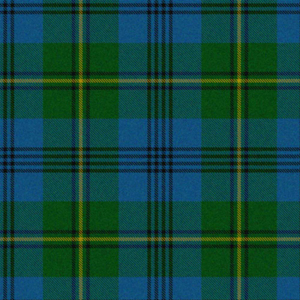A history of the Clan Johnston/e Association Australia
Johnstons have been associated with Australia since the first permanent European settlement in 1788. Lieutenant (later, Major) George Johnston was, reputedly, the first person to step ashore when a British fleet arrived at Sydney Cove on 26 January that year. He later established the first, only, and short-lived, military dictatorship in Australia, when the 'Rum Corps' overthrew the King's governor, William Bligh, in 1808. His biggest estate now forms part of the suburb of Annandale in inner Sydney. His wife, Esther Abrahams, a convict who was 'first lady' during Johnston's dictatorship, is a key figure in Australian Jewish history. Their son, also George , produced the earliest artwork by a non-indigenous person born in Australia.
While Annandale in inner Sydney is the earliest of the placenames in Australia associated with Johnston/es, it is not the only one. The Sydney suburb of George's Hall is named after a house and farm of major George Johnston, and the suburb of Annangrove is named after a house owned by his grandson, Edward Johnston.
There is a Johnston Lake in Tasmania and in Western Australia. Johnston is the name of an electoral district for the Northern Territory legislative assembly, named after commodore Eric Johnston, a former administrator of the Territory. The Queensland city of Townsville has a suburb called Annandale.
And Queensland has a Johnstone River, in two arms, the South Johnstone and the North Johnstone. The river was named for policeman and explorer, Robert A Johnstone, who headed a troop of mounted Native Police. He was also a member of the Johnstone River Settlement Party – a group of Europeans and Melanesians who established a non-indigenous settlement in the district in 1880, hence the township of South Johnstone, and the Shire of Johnstone.
The same Johnstone also had his name given to Australia's freshwater crocodile, which ranges throughout northern Australia, crocodylus johnstoni , which is variously called the Johnston crocodile, Johnstone crocodile, and Johnstone River crocodile.
In Scotland, the name Johnstone in its various forms has been identified since the early 12th century CE. The original John had a 'tun' or 'estate' in the valley of the river Annan – Annandale, in the period when the de Brus family were earls there. Norman men-at-arms had begun identifying themselves using the estate names of their employers around 1035. King Malcolm III of Scots encouraged this practice in Scotland by directing his chief lords create surnames from their lands. Such surnames became hereditary among the landed class in the Norman-French cultural zone during the 12th century. John's son Gilbert was referred to as Gilbert de Jonistoune, establishing the surname as a territorial name not a patronymic. Early spellings included Jonistune, Jonistoun, Jonestone, Jonestoun and Jonstoun. The Johnston spelling was first recorded in the late 14th century.
The Johnstones' built up power on the western marches as agents of James V of Scots against the Douglases in the early 16th century. They contested the power of the Maxwells in the late 16th century. A massacre of Maxwells at Dryfe Sands near the Johnstone/Jardine town of Lockerbie in 1593 was the last 'clan' battle in the border marches.
Authorities differ about whether the Johnstons' of northeast Scotland also have an Annandale connection through Stephen de Johnston: he might have come from Annandale, or he might have adopted the surname from estates – he acquired estates at Caskieben in Aberdeenshire in the 14th century.
From the 17th century Johnstones' were part of the lowland migrations to Ireland and North America.

